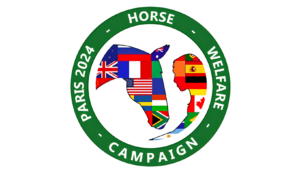IV. TACK & ARTIFICIAL AIDS
PARIS ‘24 HORSE WELFARE CAMPAIGN
“The welfare of Olympic horses should no longer be overlooked and neglected”
This blog is an excerpt from the PARIS 2024 HORSE WELFARE CAMPAIGN MAGAZINE which is free to download and read online.
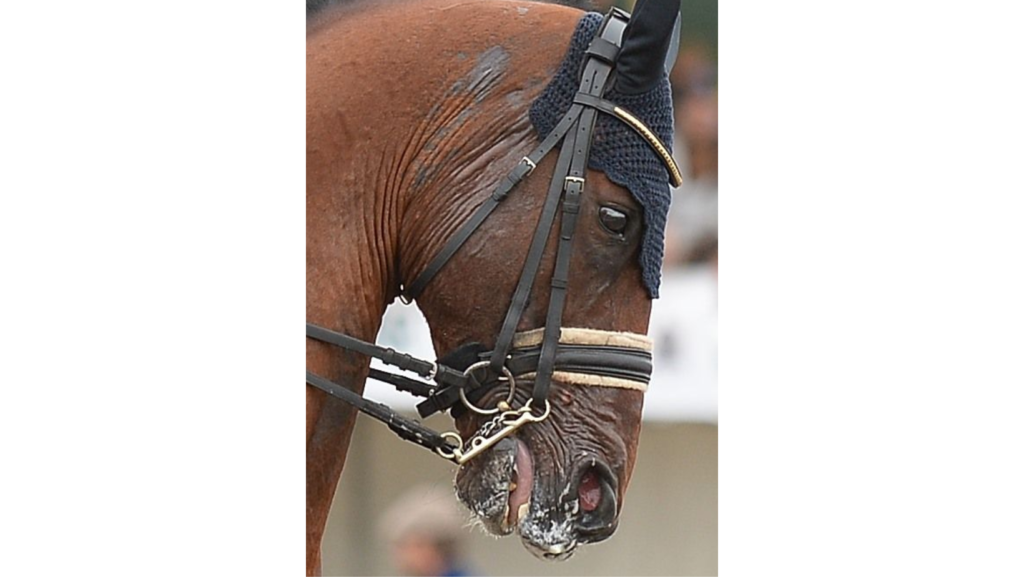
Photo credit: Crispin Parelius Johannessen
A. NOSEBANDS
The traditional noseband is the French (flash) noseband that riders learn to tighten from an early age (theory of the Galops curriculum from the FFE).
When it is too tight, the noseband causes many problems, as demonstrated by Dr Isabelle Burgaud (IFCE Publication, 2020):
- painful pressure on the fragile structures of the muzzle;
- injuries to the cheeks, bars, corners of the lips;
- the horse can no longer chew or swallow its saliva and often drools profusely;
- ulcers on a poorly maintained mouth with dental points;
- disturbs the poll flexion;
- compression of the nerves and blood vessels of the face;
- postural discomfort (increasing occlusion);
- an increase in the frequency of osteopathic dysfunctions;
- affections of the mouth, TMJ (temporomandibular joint), neck, and hyoid apparatus;
- a stressful effect (evaluated by variations in heart rate, cortisol, thermography, and behaviour).
Other studies have also shown that excessive tightening of the noseband could lead to physiological discomfort (Doherty, 2017):
- restricted breathing caused by the significant pressure on the nose and the muzzle;
- an alteration of blood circulation, by the compression of the vessels of the head;
- an impossibility to swallow (swallow), which often manifests itself by a strong production of saliva;
- an impossibility for the horse to express pain or fear and even relaxation;
- an increase in stress which results in particular in an acceleration of the heart rate (Fenner, 2016).
Recommendation #7:
Improve the controls against the excessive tightening of nosebands and curb chains: Provide a more calibrated check, performed randomly during training sessions and systematically when entering or leaving each event, using a 1.5 cm ISES taper gauge placed on the nasal bones (which allow one adult finger to slide between the noseband strap and the hard nasal bone) and apply a penalty in the event of an infringement.
Unfortunately, manufacturers provide riders with nosebands that allow them to further amplify the tightness of the straps.
Recommendation #8:
Review the list of tack which, by its creative design or manufacture, can cause harm and discomfort to the horse, and prohibit its use in competition, in particular nosebands that increase the capacity to tighten (crank, lever, grackle, double, etc.) as well as flash nosebands in all disciplines: Create a positive list of authorised nosebands.
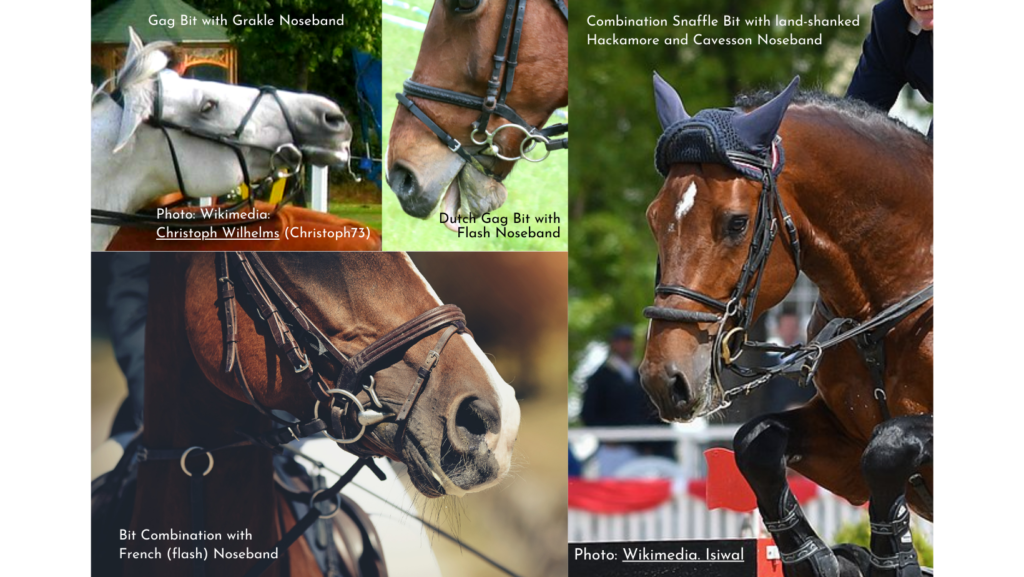
B. BITS & MOUTHPIECES
In dressage, there is a list of authorised bits, while in jumping and cross-country, there are no restrictions, although specialists describe some bits as causing pain.
Recommendation #9
Prohibit the use of elevator/gag bits on cross country, particularly when combined with a grackle or flash noseband.
Recommendation #10
Prohibit the use of tandem/combination bits, bits with twisted or double mouthpieces, and all bits that do not align with equine welfare, and create a list of authorised mouthpieces.
It will be necessary to inform all riders in advance of all modifications interfering with the FEI regulations.
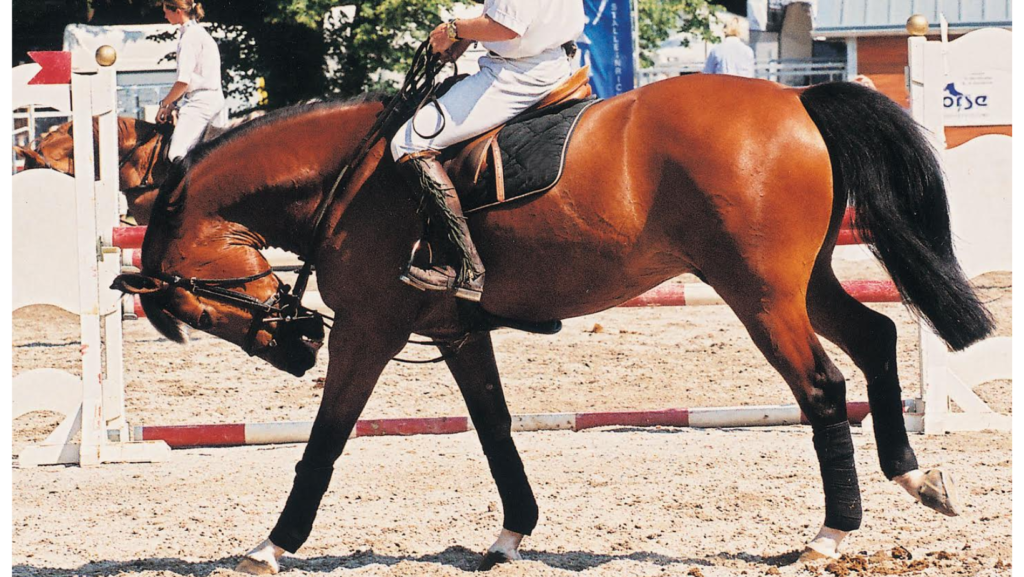
Photo: From the book Tug of War by Dr Gerd Heuschmann
C. REINS
Many reins are used during the tests, during training and warm up phases and during the prize giving. Care must be taken that they never prevent horses from extending their muzzle in front of the vertical and that they are not used with a device designed to raise the head when the reins promote lowering.
At this level, riders should be able to make do without them, and they are a bad model for all the lower level riders who do not understand the potential danger these reins pose to horses.
Recommendation # 11:
Prohibit the use of martingales in combination with an elevator (gag) bit throughout the entire Olympic Games grounds.
Draw reins (above photo) run from the chest to the hand of the rider passing through the bit, with the effect of bringing the muzzle of the horse towards his chest, thereby tending to enforce a hyperflexed posture, even when used by riders of a high level.
In order to avoid encouraging postures (frames) that are deleterious for the horse’s welfare, it is necessary to fit a snaffle in such a way that its rings are connected only to the reins and the cheek pieces. No other straps or systems should run through them or be fixed in any way so as to pressure to a part of the horse’s body or to connect with another saddlery accessory.
Recommendation #12:
Prohibit the use of running reins (draw reins) throughout the entire Olympic Games precinct.
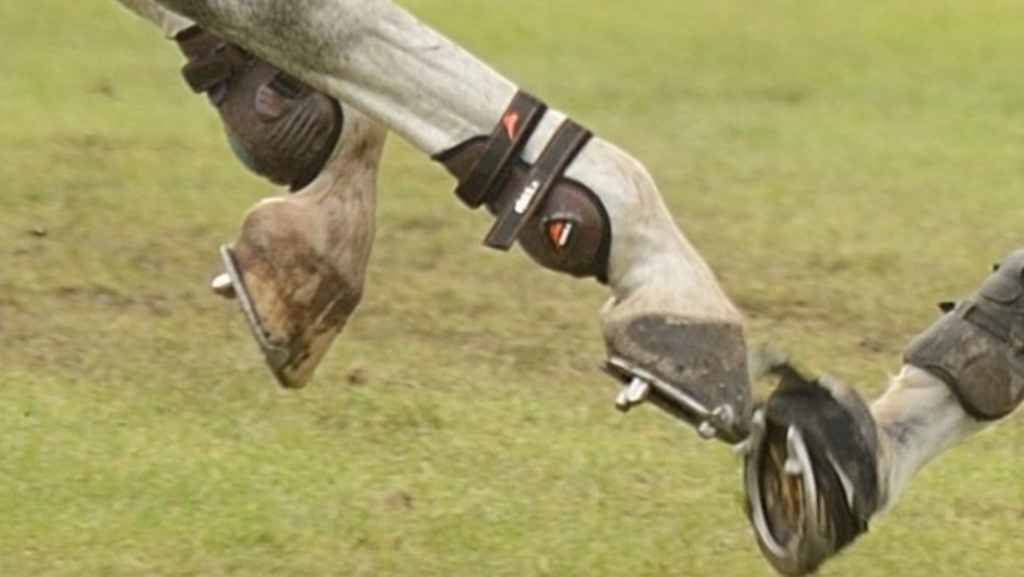
Photo credit: Crispin Parelius Johannessen
D. HIND BOOTS
For many years, in CSO, as soon as certain riders have finished their round, the grooms rush to the horses to remove their hindleg tendon boots and replace them with simple fetlock boots.
Rising up to mid-tendon and tightened before entering the ring, these rear boots painfully stimulate a sensitive area of the fetlock and motivate the horse to escape this pain, by tilting the back excessively and passing the hind legs well over and above the obstacle. It is a ploy which aims to artificially and painfully improve the performance of horses, therefore akin to “a mechanical doping device”, as denounced by the French Equine Veterinary Association.
The use of these hind tendon boots is not without risks, since it causes serious pathologies to the back of the lower limbs, compressing the tendons which are sometimes sheared on landing.
Frédéric Cottier, team World Champion and course designer at the World Equestrian Games in Normandy, has also declared that “even honest riders are encouraged to use these so as not to be disadvantaged. It must absolutely be banned because it is nothing but mechanical doping. Without these gaiters, most of these horses would never jump clear rounds, and would not be in a position to shine”.
The FEI has banned them but only for young horses.
Recommendation #13
Prohibit the fitting of tendon boots on the hindlegs by extending the FEI rules already in place for young horses, to all horses in all disciplines. Increase controls of the tightness of fetlock boots and review their authorisation, to reduce their use.
Recommendation #14
Organise a tabletop check of the tack and protective equipment of each horse with video recording, and before the events.
E. THE WHIP/RIDING CROP
Striking a horse with a whip is always badly perceived by the general public. Whipping is de facto an act that violates animal welfare, it seems very cruel and useless when we consider the images of Annika Schleu (Pentathlon, Tokyo 2021).
Ideally, whipping should be absent from competition at this level altogether.
Recommendation #15:
Prohibit the use of the whip more than once per event and more than twice during the warm-up. The use of a whip more than once per event and twice during warm-up will result in a sanction or even disqualification. Video surveillance used as evidence if necessary.
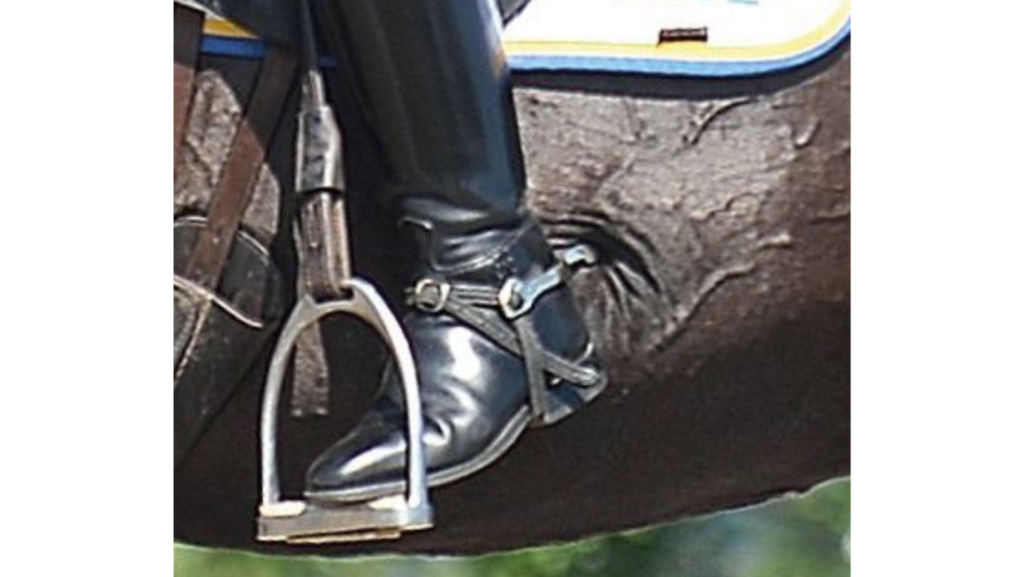
Photo credit: Crispin Parelius Johannessen
E. SPURS
Spurs are mandatory in some events even though some riders prefer to ride without them.
Recommendation #16:
Authorise riding without spurs in dressage, as is the case in all events.
Belly bands were created to prevent the horse from being injured in the event of excessive or poorly controlled use of the spurs. If the skin is no longer lacerated thanks to these belly bands, the abuse persists but is less visible, superficially. This device must not be used, and spurs must be used with precision and moderation.
Recommendation #17:
Prohibit belly bands.
Last year, American rider and 2018 World Cup finalist Andrew Kocher was suspended for ten years by the FEI for using electric spurs in major international competitions. He was subsequently disqualified from all the events in which he had participated with this electrical equipment, i.e. Hickstead (June 21-24, 2018), Lexington (May 14-18, 2019 and May 22-26, 2019), Calgary ( June 5-9, 2019 and June 27-30, 2019), Traverse City (August 7-11, 2019), Columbus (October 2-6, 2019) and Toronto (November 5-9, 2019). It is unfortunate that this painful practice has been able to continue for so many years. It is therefore essential to systematically check all the artificial aids of the rider.
Recommendation #18:
Systematically check the conformity of the rider’s artificial aids (spurs, whip), as well as the horse’s tack and protective equipment, as provided for in the regulations.
This blog is an excerpt from the PARIS 2024 HORSE WELFARE CAMPAIGN MAGAZINE which is free to download and read online.
